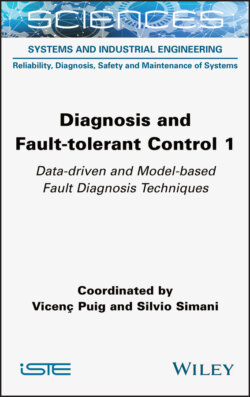Читать книгу Diagnosis and Fault-tolerant Control 1 - Группа авторов - Страница 16
I.6. Robust fault diagnosis
ОглавлениеIn the context of automatic control, the term robustness is used to describe the insensitivity or invariance of the performance of control systems with respect to disturbances, model–plant mismatches or parameter variations. Fault diagnosis schemes, on the other hand, must, of course, also be robust to the mentioned disturbances, but, in contrast to automatic control systems, they must not be robust to actual faults. On the contrary, while generating robustness to disturbances, the designer must maintain or even enhance the sensitivity of fault diagnosis schemes to faults. Furthermore, the robustness, as well as the sensitivity properties, must be independent of the particular fault and disturbance mode. Generally, the problem of robust FDI can be divided into the tasks of robust residual generation followed by robust residual evaluation.
In many cases, the disturbances and model–plant mismatches to which robustness must be generated are due to the use of linear models for describing dynamic behavior of nonlinear processes. Modeling errors can be avoided from the very beginning by focusing on robust residual generation methods using linear and nonlinear process models. This, in turn, simplifies the problem of residual evaluation without reducing the sensitivity to actual faults.
Effective tools for robust residual generation and even complete decoupling from external disturbances and unknown system parameters can be provided, for example, by UIOs, which are introduced and applied to industrial processes. It is shown that the proposed solution to the disturbance decoupling problem also provides the solution to both the fault detection and fault isolation problems.
On the other hand, many dynamic processes can only be described effectively using nonlinear mathematical models. However, most of the existing observer-based FDI techniques are limited to the use of linear process models. The methods that can be found in the literature are based on the assumption that the system under supervision stays, during normal operation, in a neighborhood of a certain known operating point (Chen and Patton 1999; Patton et al. 2000)
It is clear that, as almost every process system is nonlinear, the modeling errors almost always reduce the accuracy of the linear model and therefore the performance of the FDI algorithm is compromised. Various methods for generating robustness to linearization have been proposed in the literature and the reader is referred to (Patton et al. 2000, Chapter 7) for a comprehensive treatment of this subject.
This book also surveys the state of the art of robustness methods and presents some important ideas concerning the development of the use of nonlinear models and predictors for FDI. For example, observer-based approaches to robust FDI and FTC for dynamic systems are considered in more detail. The available model-based approaches are generalized, and thus extended to a wider class of dynamic systems.
In order to accommodate the application of robust FDI concepts, disturbances and parameter uncertainties of the monitored plants, as well as faults, are modeled in the form of unknown input signals. It is shown that, provided certain conditions can be met, complete decoupling of the residual from disturbances as well as from the parameter uncertainties of the process model can be achieved, while the sensitivity of the residual to faults is maintained. As the faults are also modeled in the form of external signals, this method additionally provides tools for the purpose of fault isolation. Fault isolation requires the decoupling of the effects of different faults from the residual (Chen and Patton 1999) and this, in turn, allows for decisions on which fault or faults out of a given set of possible faults has actually occurred.
These residual properties must be completely independent of the magnitude or frequency of the unknown inputs and the faults. This is crucial in cases where no a priori knowledge about these properties is available. For systems where the complete decoupling of the remaining unknown inputs or faults from the residual proves impossible, a threshold selection method, employing functional analytic methods and appropriate vector and operator norms, can be exploited. This technique provides a tool for the robust evaluation of the residuals, which have been generated by UIOs. Using the same functional analysis methods as employed for threshold selection, a performance index can be defined that allows for performance evaluation and, to a certain degree, also allows for optimal residual generator design (Patton et al. 2000).
